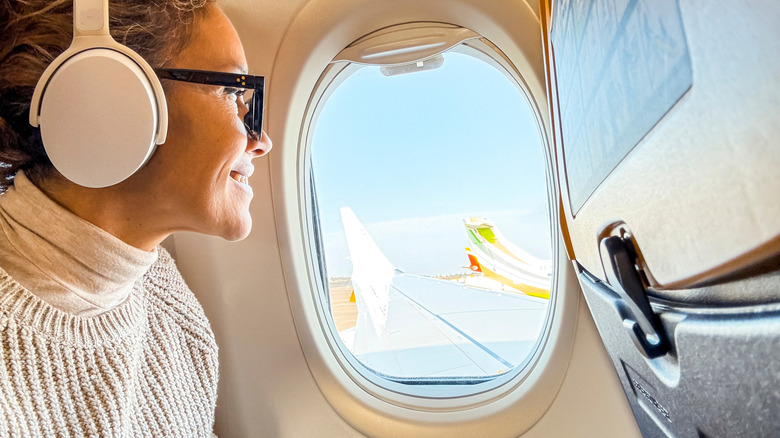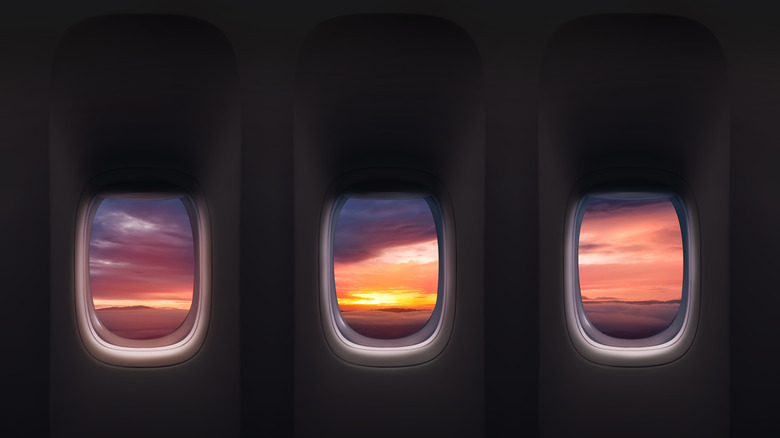The Reason Why Airplanes Have Round Windows
It's easy to get on a plane and jet off to wherever you like in the world. Some people never even think about what an amazing feat it really is and how much engineering goes into a metal tube that lifts off the ground and flies through the air. However, if you're one of the people who looks out the window while soaring at 30,000 feet and wonders how it all works, perhaps you've asked yourself why airplane windows are round.
Well, actually, they're more of a compressed oval shape. The edges, however, are rounded, and that's the key to this entire question. By design, sharp corners on square or rectangular windows put stress on the metal of the plane. With the addition of air pressure changes, this can induce cracks. The cracks can eventually cause an aircraft to break apart as the pressure changes during the flight, particularly during key moments like takeoff and landing.
To understand the physics of this, we have to travel back to the '50s when commercial air travel began. Larger planes were in demand as people began to use this form of transportation more frequently, and passengers wanted to see a view from the sky. However, the first commercial plane, the de Havilland Comet, broke apart mid-flight in 1953. Then it happened again in 1954. The reason was determined to be the metal fatigue that came from the corners of its large square windows.
Square or round? All about airplane windows
It was determined that the metal fatigue that caused cracks in the plane got wider as the air pressure increased during take-off. After the de Havilland Comet disasters — of which there were three fatal incidents — windows with rounded edges were implemented. The physics of rounded windows means that they don't have corner stress points, so the pressure is distributed more evenly.
In addition, the windows are now made of three layers of acrylic, a robust and pressure-resistant material. By the way, the tiny hole you may have noticed at the bottom of airplane windows is called a bleed hole, and it helps to regulate pressure between the layers of acrylic in the windows. The hole itself is only in the middle layer, so you're not getting any air directly through it. (Also, the window seats are often colder than other spots on the plane because they're closer to the outer wall of the aircraft, not because of the bleed hole.)
Another thing to know about aircraft windows is that it really is best to wear sunscreen while traveling by plane, especially when you get a window seat. These windows don't block all the UVA rays from the sun and could be causing you skin damage as you fly. So, the next time you're on a plane and watching the clouds roll by as you travel to your destination, take a moment to admire the design that keeps you safe.

